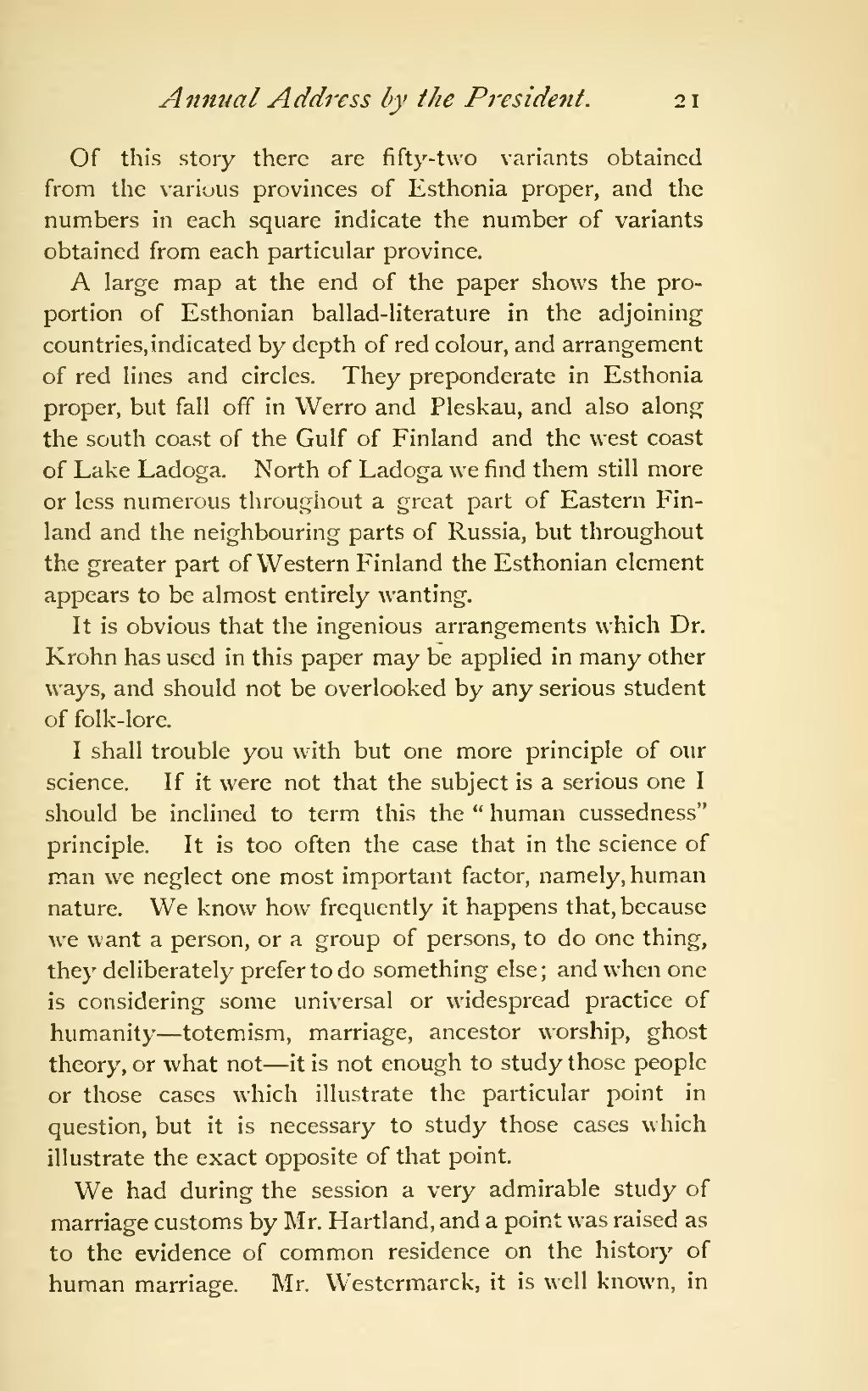Of this story there are fifty-two variants obtained from the various provinces of Esthonia proper, and the numbers in each square indicate the number of variants obtained from each particular province.
A large map at the end of the paper shows the proportion of Esthonian ballad-literature in the adjoining countries, indicated by depth of red colour, and arrangement of red lines and circles. They preponderate in Esthonia proper, but fall off in Werro and Pleskau, and also along the south coast of the Gulf of Finland and the west coast of Lake Ladoga. North of Ladoga we find them still more or less numerous throughout a great part of Eastern Finland and the neighbouring parts of Russia, but throughout the greater part of Western Finland the Esthonian element appears to be almost entirely wanting.
It is obvious that the ingenious arrangements which Dr. Krohn has used in this paper may be applied in many other ways, and should not be overlooked by any serious student of folk-lore.
I shall trouble you with but one more principle of our science. If it were not that the subject is a serious one I should be inclined to term this the "human cussedness" principle. It is too often the case that in the science of man we neglect one most important factor, namely, human nature. We know how frequently it happens that, because we want a person, or a group of persons, to do one thing, they deliberately prefer to do something else; and when one is considering some universal or widespread practice of humanity—totemism, marriage, ancestor worship, ghost theory, or what not—it is not enough to study those people or those cases which illustrate the particular point in question, but it is necessary to study those cases which illustrate the exact opposite of that point.
We had during the session a very admirable study of marriage customs by Mr. Hartland, and a point was raised as to the evidence of common residence on the history of human marriage. Mr. Westermarck, it is well known, in
